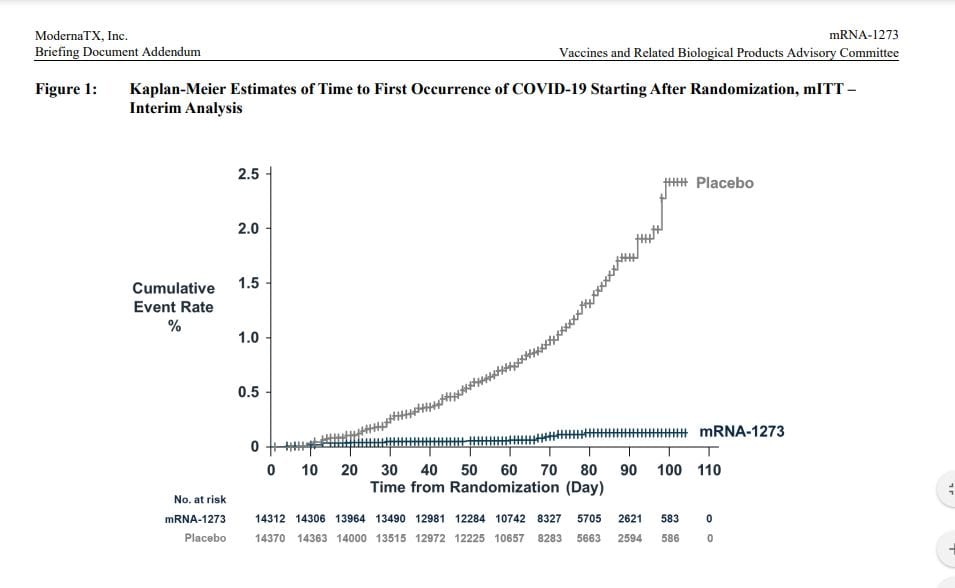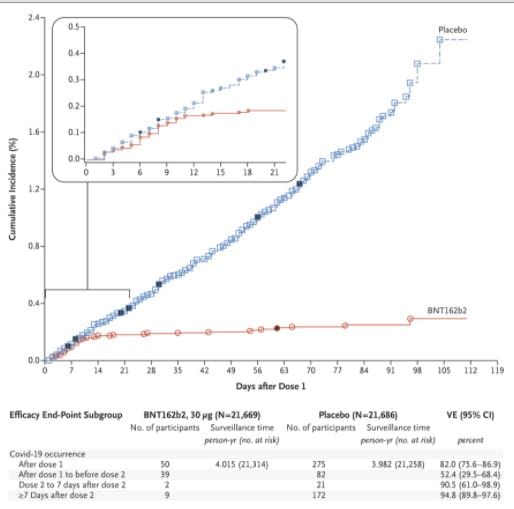I am going to write more on the topic of Covid 19 vaccines. I will argue that it would be better to give second (booster) shots only when vaccine supplies are plentiful. I think that so long as the vaccine is in short supply, people should be given one dose. I criticise the current policy of withholding vaccine to make sure that everyone who gets a first dose gets the scheduled booster either 3 weeks later (for the Pfizer vaccine) or 4 weeks later (for the Moderna vaccine). I argue that more lives will be saved with the one dose until supplies are plentiful strategy (even if many people don’t show up for the booster when supplies are plentiful). I think that the current policy will lead to tens of thousands of un-necessary deaths in the US alone
Topics:
Robert Waldmann considers the following as important: Healthcare, Moderna, Pfizer, politics
This could be interesting, too:
Robert Skidelsky writes Lord Skidelsky to ask His Majesty’s Government what is their policy with regard to the Ukraine war following the new policy of the government of the United States of America.
Joel Eissenberg writes No Invading Allies Act
Ken Melvin writes A Developed Taste
Bill Haskell writes The North American Automobile Industry Waits for Trump and the Gov. to Act
I am going to write more on the topic of Covid 19 vaccines. I will argue that it would be better to give second (booster) shots only when vaccine supplies are plentiful. I think that so long as the vaccine is in short supply, people should be given one dose. I criticise the current policy of withholding vaccine to make sure that everyone who gets a first dose gets the scheduled booster either 3 weeks later (for the Pfizer vaccine) or 4 weeks later (for the Moderna vaccine). I argue that more lives will be saved with the one dose until supplies are plentiful strategy (even if many people don’t show up for the booster when supplies are plentiful). I think that the current policy will lead to tens of thousands of un-necessary deaths in the US alone with worse consequences for countries further back in line for vaccine supplies.
The post will have two sections. One will be an attempt to analyse the published data, which are mostly Kaplan and Meier plots with numbers read off by eyeballing. I will conclude that the best (poor) estimate of the reduction of infections from the first dose is more than 18 times the reduction due to the second dose. This calculation requires the key unproven assumption that the effect of one shot is weaker than but as durable as the effect of two shots.
This would mean that efficient deployment is one dose for as many as possible as soon as possible and second doses when giving them doesn’t interfere with this. I will go on to bore people with some p-values. I think that the null that it is as efficient to give second doses on schedule is rejected at at the 5% level (given published data). I note that benefits probably include the (unproven) prevention of transmission as well as benefits for the vaccinated people. I also note that giving two to some and zero to others is unfair especially given the difficulty of deciding who gets vaccinated first and the necessarily partly arbitrary decisions. The second section will come back to arguing about public policy and ethics as I just did.
OK so data. Basically all I know is here. I am going to write mostly about the Pfizer data, so I will start with Moderna.
Moderna

I do not think it is easy to see when the second dose was given, the Kaplan Meier plot of infection of vaccinated people is almost horizontal. The risk of diagnosed infection was very low also during the interval between doses. The second dose was given on day 28. The researchers assumed that vaccine elicit immunity over a 14 day period, so the full test began on day 42. I can’t guess how many vaccinated participants were diagnosed by day 28 or day 42. One problem with interpreting the Moderna study is that the control group’s hazard of infection increased over the study period. One should really look at the ratio of the hazards for the two populations. However, I can’t do that eyeballing the graph. I think it is clear that, for the first 28 days, the blue curve is less than half the grey curve — that is an estimate of the effectiveness of the vaccine would have to be more than 50% effective. This means that the reduction of infections due to the first shot would be greater than the reduction from the second shot even if the full vaccination schedule were 100% effective. Eyeballing, the first shot looks 80-90% effective.
The Pfizer study

Again it is hard to guess when the second dose was given. In this study it was given on day 21.
This graph contains more useful information. In particular it shows each infection of a vaccinated person (red circles). In the Pfizer study, they assumed that vaccines work over 7 days not 14 days. It is important to me to count infections after 14 days (Moderna) not 7 (Pfizer). The number is semi arbitrary. I see 5 cases after day 13 and before day 35. there were 9 cases after day 34. One advantage of the Moderna graph is that they have the population at risk, but Pfizer does report watching 4015 vaccinated person years or 208,780 person weeks. I assume everyone was followed for 5 weeks so there were 65,006 person weeks of vaccinated people in week 2 4 and 5 and 100,435 of vaccinated people in weeks 6 and on. So if the risk before and after the second vaccination (plus 14 days) were equal there should be a bit more than 3/8 of the post day 13 cases should have been before day 35 so 42/8 or 5.25. In fact there were 5 cases. The risk did not decline 14 days after the second vaccination.
One unfortunate participant was diagnosed on day 14 and one on day 35. Counting them as within 14 days of the first and the second vaccination I get 5 of 13 cases in the period sufficiently after the first vaccination but not sufficiently after the second. With this slightly different arbitrary window, I get the expected number of cases 3*13/8 = 4.875. Again not a statistically or medically significant decline.
With more radical eyeballing, I estimate (guess) that about 0.3% of the control group were diagnosed from day 14 through day 34 so about 60 people (one significant figure is all my eyes can maybe manage). So my guess is that the first shot was about 90% effective over this period. The full schedule was 95% effective over the full period, so I get a point estimate that the benefit of the first shot is 18 times the benefit of the second shot.
Importantly, the Pfizer trial is a unified phase 1-2-3 study. The protocol was written and approved before the vaccine had been injected in a person. The choice of 2 doses and an interval of 3 weeks was not based on data on Covid19 vaccine in humans.
OK policy. I think the best guess of an efficient strategy of vaccination is; “it is better to delay booster shots until additional supplies are plentiful”. I am sure this will not happen. The reason is that once a protocol is chosen, it is not changed. This is an important rule for experimental science, because it guarantees that the experimental interventions are exogenous to the entities being studied. The FDA also (very properly) requires a pre-approved protocol for data analysis. This eliminates the risk of data dredging. It rules out the sort of amateur eyeballing I did here.
The FDA also has a rule that they allow no changes unless they are proven to be improvements (and they accept no evidence except for randomized controlled trials). In general this limits approval of new pharmaceuticals and biologicals, but does not limit the practice of medicine. Doctors can and due prescribe pharmaceuticals off label for treatments other than the one which obtained FDA approval.
The vaccines are different, because all vaccine supplied to the USA belongs to the US Federal Government. The policy decision of how to deploy it is, in practice, governed by FDA rules for approval of pharmaceuticals. A proposal to change the schedule of booster shots to free up vaccine for more first vaccinations is like a new proposed drug — guilty until proven innocent.
I think this is a mistake.
